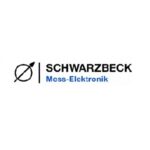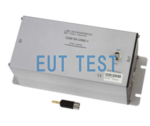Introduction:
EFS 9219 is an active antenna bracket manufactured by Schwarzbeck and authorized by EUTTEST Shenzhen for sale and quotation, this bracket needs to be purchased additionally.BBUK 9139 Biconical elements can only be used.
Instructions for use:
The active mount EFS9219 is combined with a biconical element to form a probe for measuring the strength of the electric field, and an antenna factor of 20 dB/m can be obtained in combination with the BBUK element. To obtain different antenna coefficients, different shapes and sizes of biconical elements can be used, as long as they can be fitted to the 9219. Unlike common broadband electric field probes, this probe can be used for frequency-selective measurements of very low field strengths, in which mode the probe is connected to a receiver or spectrum analyzer via coaxial cable. The field-sensitive "head" of a normal electric field probe can be perfectly "isolated" from the environment by means of a resistive cable or fiber optics. This approach is almost impossible when complex spectra need to be transmitted. Here, differential amplifiers with very high common-mode attenuation and very symmetrical low-capacitance transformers are required to achieve "isolation". Without these special techniques, the ideal reception of a biconical dipole is compromised by the parasitic antenna formed by the biconical element and the coaxial cable. In order to effectively avoid all problems caused by the power supply cable, a rechargeable nickel-metal hydride battery is built into the mount. After more than ten hours of operation, an automatic charger recharges the battery within 2-4 hours.
How to test very high electric field strengths:
The EFS 9219 probe has a linear measurement range of 130 dBmV/m to 3 V/m, depending on frequency. Higher field strength levels can lead to signal distortion and intermodulation products in the spectrum. The same will occur with many weak signals. Whenever strange signals are recognized under high level conditions, the distance between the probe and the field source should be increased. In this way, the intermodulation products will fall off faster than the "real" signal. Simple receivers and spectrum analyzers with no or insufficient front-end filtering may cause intermodulation while the probe remains linear. In this case, RF attenuation should be increased and IF attenuation decreased to reduce input saturation and noise.
How to test very low electric field strength:
When using very sensitive receivers or spectrum analyzers, probe noise is the limit for low field strength measurements. Making the receiver bandwidth smaller reduces the noise indication. The smaller the receiver bandwidth, the higher the signal-to-noise ratio when the measurement signal is narrowband. Selecting an averaging detector reduces the noise even further, with an improvement for unmodulated narrowband signals (cw) but not for broadband signals and pulsed spectra, the table below shows the noise level of this probe at different test frequencies. Measurements with the EMI receiver FMLK 1518 are made without any preamplifier and the bandwidth is the standard electromagnetic bandwidth, the smaller the bandwidth the lower the noise.

Noise level at different test frequencies
Technical parameters:
<<<<提醒:左右滑动表格>>>>| Model number | EFS 9219 |
| manufacturer | Schwarzbeck Germany |
| agent | Shenzhen EUTTEST |
| Test frequency range | 9kHz-30MHz |
| radiance factor | 20dB/m |
| Maximum measurable electric field strength | 130 dBmV/m (3 V/m) |
| Output Impedance and Connectors | N Type 50Ω Connector |
| batteries | 7.2V/1000mAh |
| size | 53 mm * 118 mm * 50 mm |
| weight | 0.65 kg |
| Optional accessories | Charger ACS110 Preamplifier BBV 9721 Extension handle: Tube of insulating material with braided current choke for direct connection to the dipole via n-connector. |










